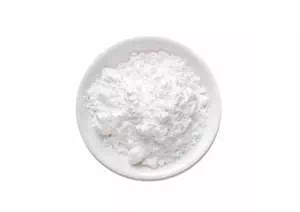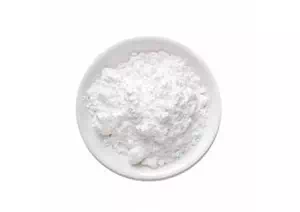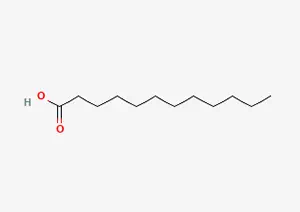All Categories



lauric acid CAS 143-07-7,lauric acid,CAS 143-07-7
Lauric acid CAS 143-07-7 is a safe, efficient and readily available medium-chain saturated fatty acid, which is widely used in cleaning products, cosmetics, drug carriers, food additives and chemical reagents.
CAS : 143-07-7
Formula : C12H24O2
Mol. wt. : 200.32
EINECS : 205-582-1
| CAS | 143-07-7 |
| Molecular formula | C12H24O2 |
| Molecular weight | 200.32 |
| EIENCS | 205-582-1 |
| Form | Crystalline Powder of Flakes |
| Melting point | 44-46 °C (lit.) |
| boling point | 225 °C/100 mmHg (lit.) |
| Density | 0.883 g/mL at 25 °C (lit.) |
| Solubility | 4.81mg/l |
| PKA | / |
| Color | White |
| Storage temp | 2-8°C |
Lauric Acid (CAS143‑07‑7) is a safe, efficient and easily available medium-chain saturated fatty acid, which is widely used in cleaning products, cosmetics, drug carriers, food additives and chemical reagents. Its abundant sources, excellent performance and ecological safety make it an indispensable basic raw material in the modern industrial chain.
1.Cleaning and personal care
Soap and detergent: Lauric Acid can generate sodium laurate after alkalization, which is the main ingredient commonly used in cleaning products to produce rich foam.
Shampoo and facial cleansing products: It has emulsifying, foaming and moisturizing effects and is widely used in the daily chemical industry
2.Food and nutritional supplements
Source of medium-chain fatty acids (MCT): Lauric Acid is the fatty acid with the highest content in coconut oil, providing MCT oil with energy and rapid absorption characteristics
Food additives: It can be used as a fruit peeling aid, thickener and fragrance, and the FDA has recognized it as a food safety ingredient.
3.Medicine and health care
Antibacterial and antiviral effects: Studies have shown that lauric acid and its derivatives have inhibitory activity against a variety of pathogens, including herpes virus, influenza virus, etc.
Drug carriers and ointment bases: It has good skin permeability and biocompatibility and is often used in topical medication formulations.
4.Polymerization reaction and experimental research
Chemical reagents: Used in freezing point depression experiments to provide standards for laboratory analysis.
Intermediate synthesis: can react with other functional groups to synthesize derivatives such as esters and amides
GHS classification: Signal word "Danger", severe eye damage, ecotoxicity
Safety precautions: Avoid eye contact, wear goggles and gloves when handling
Transportation and storage: According to EU REACH and TSCA registration, with HMIS 2-1-0 risk rating
* Prompt reply and 24 hours online, professional team to provide best price and high quality product.
* Sample testing support.
* Every batch of products will be tested to ensureits quality.
*The packing also can be according the customers` requirment.
*Any inquiries will be replied within 24 hours.
*we provide Commerical Invoice, Packing List, Bill of loading, COA , Health certificate and Origin certificate. If your markets have any special requirements, let us know.